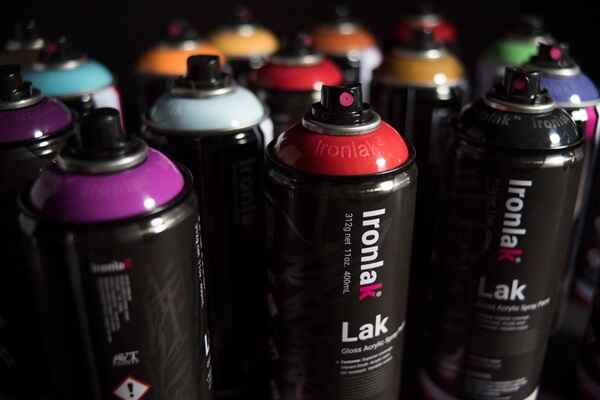Ironlak, an Australian-based graffiti and art supply brand, is renowned for offering vibrant, high-pigment spray paints at a relatively affordable price. While the brand has built a loyal following among street artists, muralists, and hobbyists worldwide, a common complaint among users—especially those familiar with more premium brands—is that Ironlak paint often feels “runny” or too thin. So why does this happen? Let’s explore the factors contributing to the runny consistency of Ironlak paint and what it means for users.
1. Formula Composition: High Solvent Ratio
One of the primary reasons Ironlak paint appears runny is due to its higher solvent-to-pigment ratio. In spray paints, solvents help the paint flow smoothly through the nozzle and ensure quick drying. However, too much solvent can thin out the paint, making it feel watery or drippy on application.
Ironlak has historically used a solvent-rich formula to keep costs lower and improve can pressure performance. While this makes the paint flow easily and increases spray distance, it also reduces the body or thickness of the paint, which may result in drips—especially if not applied carefully.

2. High Pressure Cans for Faster Output
Ironlak spray cans are designed with medium to high pressure, which allows artists to cover large surfaces quickly. However, this pressure level also means more paint is released with each spray. When combined with a thinner consistency, this can easily lead to overspray or dripping, especially for users who are used to low-pressure control systems like those from Montana Gold or MTN 94.
For beginners, this runniness can be frustrating, but for seasoned graffiti artists who prefer fast output for quick tags or throw-ups, Ironlak’s pressure can actually be a benefit.
3. Cost-Efficiency Trade-Off
Ironlak is known for being budget-friendly, offering vibrant color ranges at lower prices compared to premium brands. To maintain affordability, compromises may be made in the binding agents and paint viscosity. Thinner paint is cheaper to produce and easier to spray, but it may not offer the same rich, creamy texture and coverage as thicker, premium alternatives.
In essence, you get what you pay for—Ironlak offers decent quality at a low price, but professional-grade control and thickness might not be its strongest suit.
4. Environmental Conditions and Usage Habits
Paint behavior is also influenced by ambient temperature, humidity, and surface conditions. Ironlak paint is particularly sensitive to heat and humidity, which can alter its drying time and viscosity. In hot weather, the solvents evaporate faster, sometimes leaving streaks or uneven layers if not applied correctly.
Moreover, if users do not shake the can thoroughly, the pigment may settle at the bottom while the solvent rises, making the initial sprays extra runny. A proper shake (for at least 2–3 minutes) is essential before any use.
5. Cap Selection and Spray Technique
Ironlak cans are compatible with various spray caps, from skinny (for detailed lines) to fat caps (for wide coverage). Some caps release more paint than others, and using a fat cap on a thin, high-pressure paint can like Ironlak’s will intensify the runny effect.
Proper spray technique—such as moving the can steadily and maintaining distance—can help mitigate the issue. Many experienced artists suggest doing light, quick passes rather than holding down the nozzle in one spot.
Final Thoughts
So, why is Ironlak paint so runny? The answer lies in a combination of product formulation, pressure design, affordability goals, and user habits. While the thinner consistency can be a downside for some, especially those seeking precision and minimal drips, others appreciate Ironlak for its fast application, color variety, and accessibility.
For those new to the brand, experimenting with different caps, techniques, and surfaces can help achieve better results. And for those seeking thicker, more controllable paint, it might be worth exploring premium alternatives—or using Ironlak in combination with other tools to get the desired effect.



